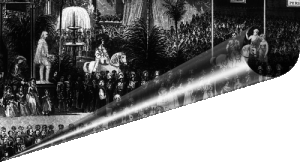
"Its grandeur does not consist in one thing, but in the unique assemblage of all things. Whatever human industry has created you find here."
Charlotte Brontë
Letter of 1851
[Quoted in Briggs, p. 52]
It was the birth of the industrial revolution, the beginning of our modern era. The power of steam was building factories and railways. Steam was to be followed by other technologies, electricity, radio, combustion engines, the telephone. The world was about to go through a period of great change.
In January, 1850, Prince Albert convened the Commissions for the Exhibition, an Exhibition that would show the works of all nations. A Universal Exhibition that would have every machine known to man.
The committees putting together the Great Exhibition gave a great deal of attention to their system of classification. The British proposed a system that included five major divisions, such as Raw Materials, Machinery, and the ever popular Miscellaneous. Countless subdivisions and subclassifications were used to put all man had made into appropriate categories.
The French, then as now, had slight philosophical differences with their British colleagues. The French Commissioner, to show why the British system wouldn't work, held up his walking stick and demanded to know what category the object would fit in. The British Commissioner assigned it to "Class XX: Articles of Clothing for immediate Personal and Domestic Use: Miscellaneous Objects." The French Commissioner pointed out that he believed that it would better fit in as a "Class V: Machines for Direct Use: Machines for the Propagation of Direct Motion."
Sources
Asa Briggs, Victorian Things, Penguin Books (London: 1990). Along with the other two volumes of this series, Victorian Cities and Victorian People, this trilogy gives a compelling look at Victorian life.

